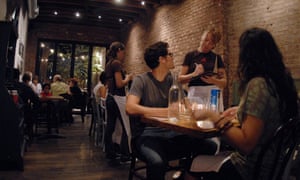Hearing loss is normally associated with old age or years of touring in a rock band. But preventable noise-induced hearing loss is actually pretty common in the general population, affecting around 15% of Americans according to the National Institute of Deafness and Communication Disorders (NIDCD).
When that damage is done to the sensory hair cells in the ear, people can’t regenerate them, so the damage is permanent, explains John Oghalai, professor of otolaryngology at Stanford University and director of the Children’s Hearing Center at Lucile Packard Children’s Hospital Stanford. While there is ongoing research into finding ways to regenerate sensory hair cells and improve cochlear implants, there is no perfect solution to hearing loss right now, which makes the need to lessen our exposure to loud noise that much more important.
But when you live in a city, like the majority of US residents, it can be hard to avoid loud noise, between trains, buses, honking cars and the sound of millions of people living on top of each other.
To get a sense of how much volume many of us experience just by going to work or meeting a friend for a meal, I decided to measure the normal din that 8.5 million New Yorkers experience every day.
Since New Yorkers love to eat out – and the eateries in this city are notoriously loud – I measured the volume in two restaurants: a popular New Orleans style casual eatery in Brooklyn and a trendy Southern food restaurant in Manhattan during Sunday brunch.
During dinner time, the Brooklyn restaurant clocked in at 91 decibels. At the Manhattan brunch spot, the noise level varied between 92 decibels as people strained to be heard above the reggae music, to a low of 72 decibels with UB40’s 1980s hit Red Red Wine, which allowed everyone to shout a little less.
For comparison, a food blender registers at around 90 decibels. Imagine dining out as a blender is going off at the next table.
According to the Occupational Safety and Health Administration (Osha), exposure to 90 decibels risks damaging hearing after eight hours, so each time the waitstaff pull a long shift, they may be causing damage to their ears.
What constitutes too loud is up for debate. The Osha permissible exposure limit is 90 decibels for all workers for an eight-hour day. But there is no way to determine the exact volume at which most people would develop hearing loss without actually exposing people to hearing damaging levels of noise on purpose, which would be unethical. The National Institute for Occupational Safety and Health has found “significant noise-induced hearing loss” at the levels permitted by Osha.

Even if New Yorkers can avoid loud restaurants, 5.7 million people travel by subway each weekday. While the noise inside a subway car is only 75-85 decibels – provided no one is shouting and there are no performers – the noise of a train passing the station is another matter. In Times Square, one of the busiest subway stations in the city, the noise level ranges from 80 decibels to 96 decibels when the express trains barrel through the station.
Other stations measured, including the 86th street station on Manhattan’s Upper West Side briefly hit an ear-splitting 101.9 decibels.
The eastbound trains at Union Square, another popular station, registered in at around 95 decibels, as New Yorkers and tourists alike looked pained and covered their ears with their hands. For perspective, 100 decibels is also the volume of a power lawn mower or a jet taking off at 305 meters.
Most of us try to spend as little time in subway stations as possible, and MTA employees wear hearing protection, but anyone who commutes in the city easily spends 15-30 minutes, five days a week listening to industrial-level noise while waiting for their train to pull in.
Everyday city noises are impossible to avoid but there are a few things people can do to help stave off hearing damage. It can be a good idea to use foam earplugs if you are stuck waiting for the express train. The same rule applies to loud concerts, says Oghalai.
For headphones, there is a simple rule: if you can hear someone else’s music when they have them on, the volume is too loud, Oghalai says. For eating out, there are now noise ratings included in many restaurant reviews.
Companies like Apple provide a function to limit the maximum volume on their devices if you are concerned as well.
From daily commutes, to eating out, to sitting in your apartment and hearing the honking of cars from a sixth-story window when the mailman blocks the street below with his van (a robust 83 decibels), New York is full of noise no matter where you go.
But for those lucky enough to escape, there is somewhere nearby they can go for quiet. In the suburbs, the sound inside a house in upstate New York with the soothing hum of central air and two elderly dogs wheezing in the background is a relaxing 33 decibels, just above the volume threshold for rustling leaves.
NYC subway exposes commuters to noise as loud as a jet engine
Hiç yorum yok:
Yorum Gönder